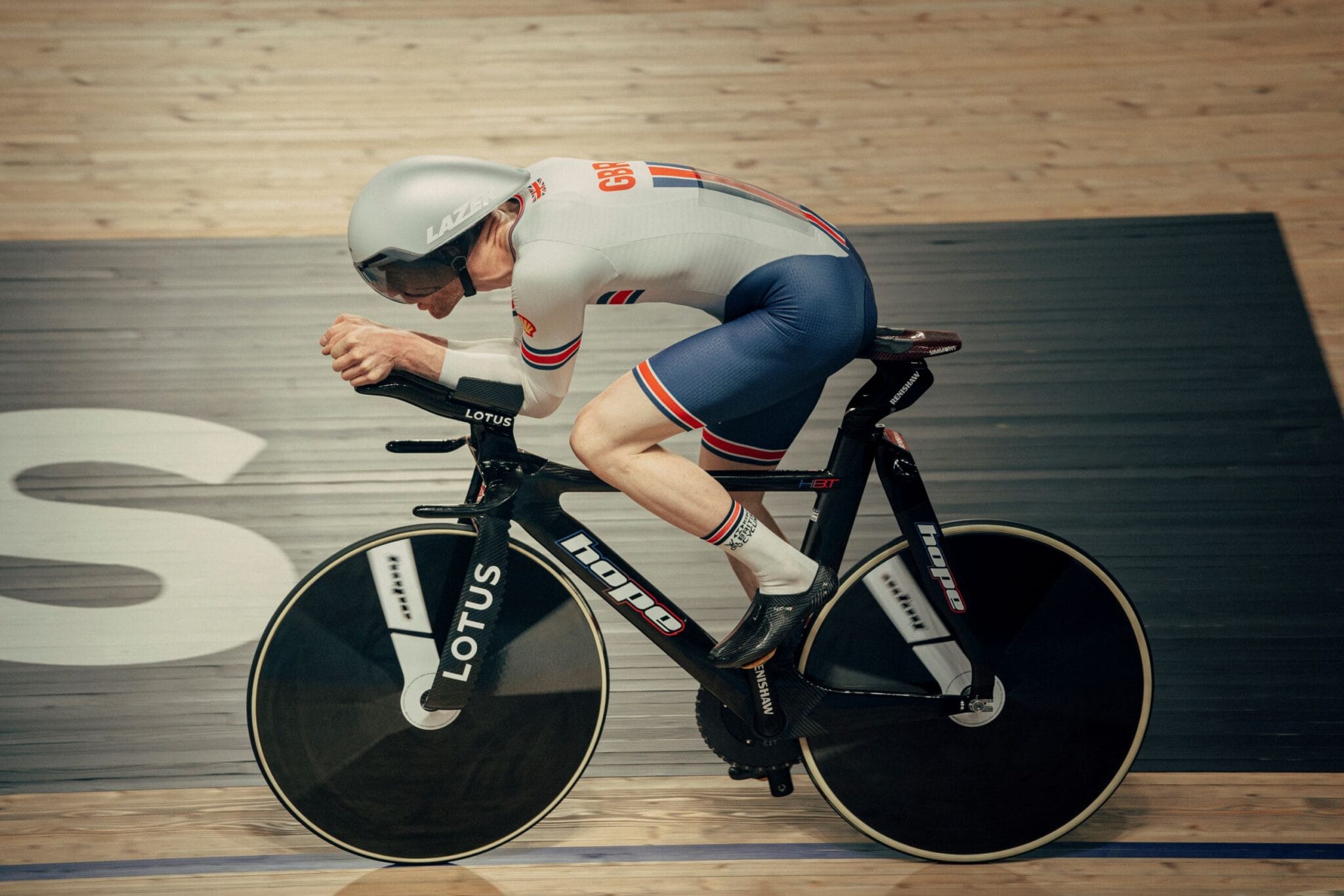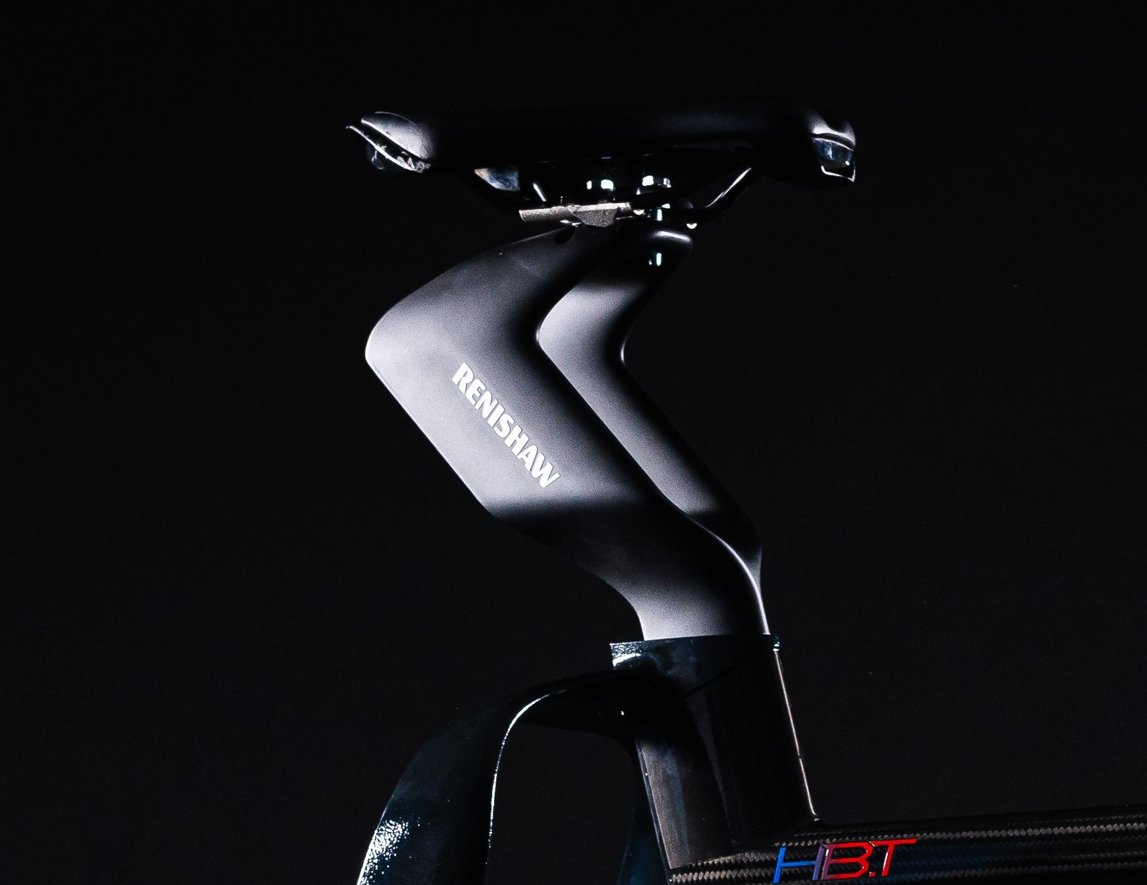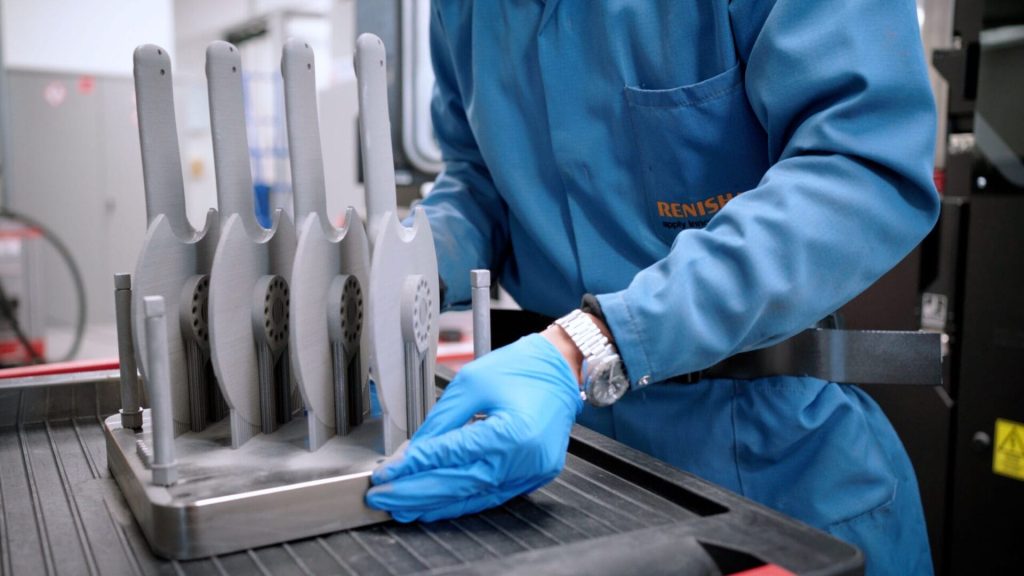Metal 3D printing from global engineering firm Renishaw helped Team GB win eight track cycling medals at the 2024 Olympic Games in Paris.
The company collaborated with British Cycling to 3D print over 1,000 parts for 32 Olympic track bikes using its RenAM 500Q, four-laser metal 3D printer. These parts included an aerodynamic crank, dropouts, seat stay bridge and seat post. The latter was reportedly the first 3D printed component of its kind, featuring a novel design for superior aerodynamics.
Team GB had initially intended to manufacture its bikes largely using conventional methods. However, time constraints imposed by the COVID-19-delayed 2020 Olympics, held in 2021, necessitated the shorter lead times offered by additive manufacturing.
At the 2020 Tokyo Olympics, Renishaw also helped to produce the Great Britain Cycling Team’s track bike using its RenAM 500M 3D printer.
“The carbon fibre parts produced using traditional machining methods for the Tokyo bike met all the requirements we had, but time constraints for the Paris bike meant that this method was no longer viable for some bespoke parts,” explained Dr Oliver Caddy, Lead Project Engineer at British Cycling.
“After seeing the benefits of AM and what it helped us achieve on the Tokyo bike, we knew it could be a manufacturing method to explore further.”

Team GB adopts additive manufacturing
At the 2024 Olympic Games, Great Britain brought home 65 medals, including 11 in cycling, eight of which came from the track. One key highlight was Katy Marchant, Sophie Capewell, and Emma Finucane’s gold medal and new world record in the women’s team sprint.
British Cycling’s equipment and apparel development team is responsible for developing and producing new bikes for Team GB and giving athletes the best tools to achieve success.
At the games, the organization’s bikes had to deliver maximum speed, balance and aerodynamic performance. Design and manufacturing capabilities, including metal 3D printing, were crucial in achieving this.
Due to the COVID-impacted 2020 Olympics being delayed to 2021, British Cycling faced significant pressure to deliver an optimized bike in time. Core components, such as the carbon fiber crank and seat posts, were originally developed using traditional methods such as injection molding and machining. This requires the manufacturer to first develop tooling to create the final part – a time-consuming process.
“Components such as the crank and seat post are customised to the rider, so we needed to find a way to develop different sized parts quickly, while also using a method that could deliver the performance gains required for the application,” explained Caddy.
To achieve this, the team turned to Renishaw’s metal 3D printing technology, which had already supported its success at the Tokyo Olympics.

3D printing enables Olympic cycling success
Renishaw first 3D printed plastic prototypes of the carbon fiber parts. “We knew that we had to experiment with the British Cycling team to find the optimum geometries and internal structures for these parts,” commented Ben Collins, Lead Additive Manufacturing Applications Engineer at Renishaw.
After several rounds of prototyping and testing, they agreed on the external designs for the seat post, crank, and smaller components like the seat bridge and dropouts. Next, the parts were 3D printed in titanium.
Additive manufacturing allowed for complex geometries which removed unnecessary weight. For instance, when developing the aerodynamic seat post, engineers developed free-form geometries which hollowed out the part as much as possible.
The hollow centre and backwards leaning design enabled air to flow through the middle of the bike, optimizing its aerodynamic performance. Each titanium seat post was 3D printed to the exact measurements of the individual riders. According to Collins, this would have been impossible using traditional manufacturing methods.
Collins also highlighted the value of 3D printed lattice structures, which allowed the team to “achieve the same stiffness as the original carbon fibre parts but with reduced weight.”
Usually, lattices are consistent in thickness throughout the parts. However, for the bike’s crank, stress points were caused by strength and force applied at different areas. This could have caused the part to fail.
To overcome this, Renishaw used topology optimization software to create unique internal lattices that possess thicker sections at points of high stress. Thinner lattices were placed in areas of low stress to reduce weight.
The titanium crank underwent ISO testing, ensuring it could withstand the intense pressures of Olympic racing. While standard bikes are usually tested against 1,000 Newtons of force, Olympic bikes must withstand 3,000 Newtons.
“Working with Renishaw has taught us a lot, not only about the specific parts we’re producing for Paris 2024, but about where AM can deliver the most value in different applications and how design influences the properties of the final part,” added Caddy.

3D printed bikes
Away from British Cycling, many companies have identified the value offered by additive manufatcring for bike production. Earlier this year, 3D printing materials developer Elementum 3D and German machine tool manufacturer TRUMPF collaborated to enhance INTENSE Cycles‘ M1 downhill race bike.
INTENSE leveraged TRUMPF’s metal 3D printing technology to fabricate key components for the bike’s backbone, a pivotal element in improving suspension performance. The project leveraged Elementum 3D’s A6061-RAM2 alloy. This 3D printable material mirrors the alloy employed in INTENSE’s aluminum frames.
The material’s weldability and consistent processability reportedly streamlined the development of 3D printing parameters. This minimized the number of iterations needed to attain the required relative density values.
Elsewhere, Welsh bespoke bicycle manufacturer Atherton Bikes partnered with Renishaw to 3D print its World Cup winning bikes. The patterns first collaborated to produce 3D printed titanium lugs for the bike’s frames. 3D printed on the RenAM 500Q, the lugs were designed to be lightweight and robust.
These 3D printing capabilities were then brought in-house by Atherton. This allowed customers to test their new bikes in the Welsh mountains, a short drive from its office.
Want to help select the winners of the 2024 3D Printing Industry Awards? Join the Expert Committee today.
What does the future of 3D printing hold?
What near-term 3D printing trends have been highlighted by industry experts?
Subscribe to the 3D Printing Industry newsletter to keep up to date with the latest 3D printing news.
You can also follow us on Twitter, like our Facebook page, and subscribe to the 3D Printing Industry Youtube channel to access more exclusive content.
Featured image shows the 2024 Team GB Olympic track bike. Photo via Renishaw.


